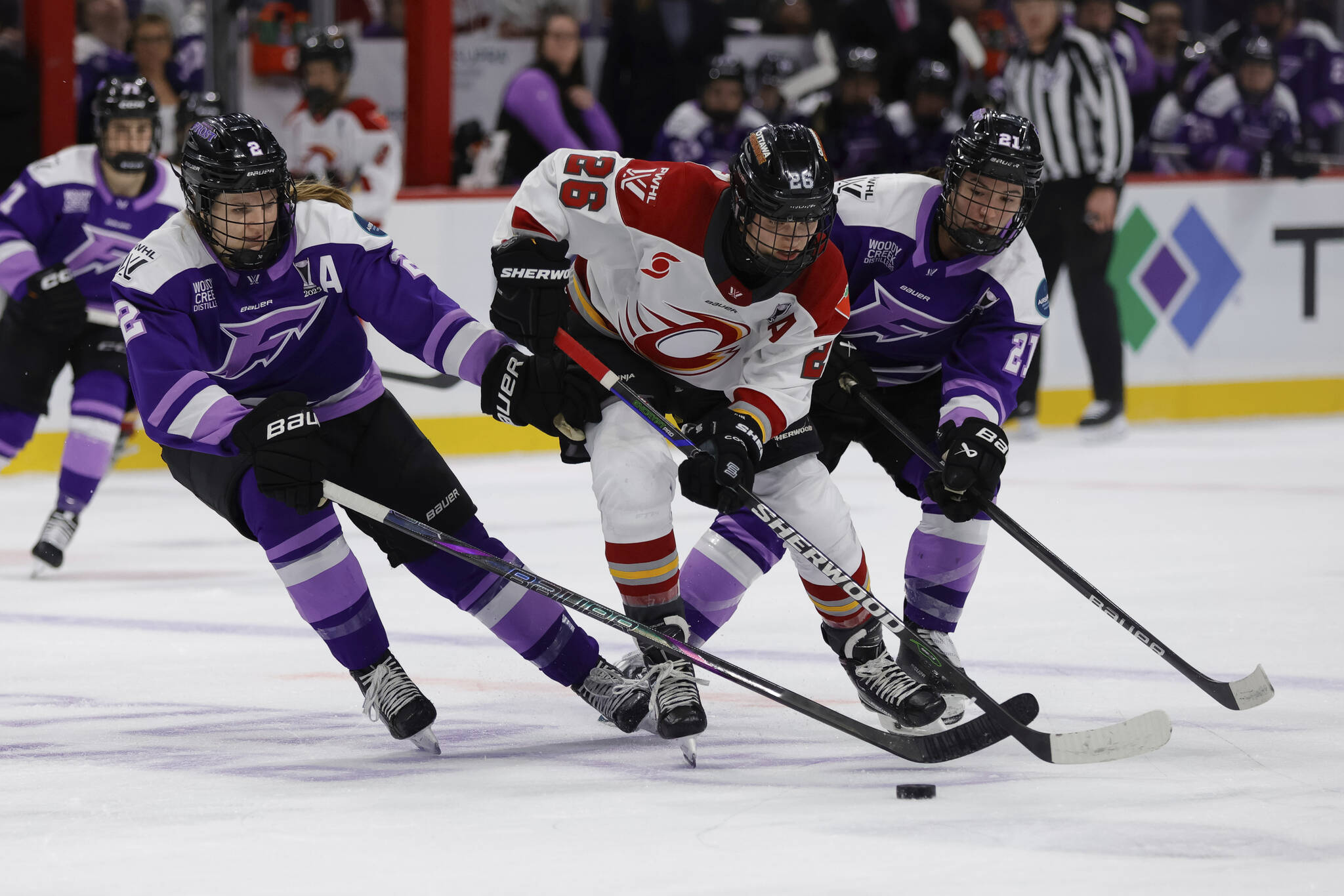Health
Tackling Gender Disparities: Communities Needed to Boost Girls in Sport

By the age of 14, girls in Canada drop out of sport at twice the rate of boys, resulting in a significant gender participation gap. This alarming trend not only limits the physical health and mental well-being of young girls but also deprives them of crucial social skills that sports cultivate. As women’s sports gain momentum worldwide, closing this gap in Canada appears more attainable, yet it requires concerted efforts from communities to provide the necessary support and role models.
Understanding the Participation Gap
According to the Canadian Women and Sport organization’s recent Rally Report, gender disparities persist in sports participation, with girls and women engaging at lower rates than their male counterparts. A critical factor contributing to this gap is the lack of visible role models in sports. While the landscape is changing, with increased visibility of female athletes, merely providing equipment or facilities is insufficient. Girls need to see themselves reflected in sports to inspire participation.
Recent developments in elite women’s sports illustrate this shift. Increased airtime for the Women’s National Basketball Association (WNBA), the growth of the Professional Women’s Hockey League (PWHL), and record viewership of the upcoming 2025 Women’s Rugby World Cup demonstrate the rising profile of women athletes. Christine Sinclair, following Team Canada’s Olympic gold medal win in 2021, has inspired a new generation of girls to engage in soccer. Similarly, the success of swimmer Summer McIntosh has led to a resurgence of interest in swimming in Canada.
The Role of the “Demonstration Effect”
The phenomenon researchers refer to as the “demonstration effect” indicates that observing elite athletes can motivate individuals to participate in sports. This effect involves three components: the excitement of witnessing exceptional performances, an automatic emotional response, and the drive to take action. While this effect is promising, the transition from inspiration to actual participation highlights a significant challenge.
Newly inspired athletes often turn to local community sports clubs, but many of these clubs lack the capacity to accommodate increased numbers. As participation rates rise, clubs must enhance their infrastructure and resources to effectively support new members. This includes ensuring adequate facility space, qualified coaching, and appropriate equipment. The shortage of swimming pools in Canada exemplifies the pressing need for improved infrastructure to meet the growing demand.
Moreover, the representation of women in coaching and officiating roles remains disproportionately low. To sustain girls’ participation in sports, national and provincial organizations must prioritize training and retaining women coaches and officials. These efforts should be complemented by support from the corporate sector, which has an opportunity to foster equitable change in youth sports.
To address the rising costs associated with youth sports—exemplified by the average expense of $4,478 for hockey—community sport organizations should consider providing basic equipment and designing low-cost programs. Financial barriers, including registration fees and transportation costs, can hinder participation for many families. Partnerships with corporate sponsors can further alleviate these financial constraints, ensuring that all girls have access to sports.
As community sports clubs strive to enhance their offerings, they must also focus on inclusivity. Tailoring programs to accommodate girls with disabilities, newcomers to Canada, and marginalized youth will create safer and more supportive environments. By designing experiences that reflect the diverse backgrounds and identities of participants, clubs can foster meaningful engagement in sports.
Efforts to boost girls’ participation in sports must be comprehensive and community-driven. As the landscape of women’s sports continues to evolve, leveraging the passion and support of local communities will be essential in creating lasting change. Engaging girls in sports not only enriches their lives but also builds a foundation for a healthier and more equitable future.
Georgia Teare, an assistant professor of management and leadership in kinesiology at Western University, and Laura Misener, a professor and director of the School of Kinesiology at the same institution, emphasize the importance of these initiatives for fostering a culture of participation in sports among girls.
-

 World4 months ago
World4 months agoScientists Unearth Ancient Antarctic Ice to Unlock Climate Secrets
-

 Entertainment4 months ago
Entertainment4 months agoTrump and McCormick to Announce $70 Billion Energy Investments
-

 Lifestyle4 months ago
Lifestyle4 months agoTransLink Launches Food Truck Program to Boost Revenue in Vancouver
-

 Science4 months ago
Science4 months agoFour Astronauts Return to Earth After International Space Station Mission
-

 Technology2 months ago
Technology2 months agoApple Notes Enhances Functionality with Markdown Support in macOS 26
-

 Top Stories3 weeks ago
Top Stories3 weeks agoUrgent Update: Fatal Crash on Highway 99 Claims Life of Pitt Meadows Man
-

 Sports4 months ago
Sports4 months agoSearch Underway for Missing Hunter Amid Hokkaido Bear Emergency
-

 Politics3 months ago
Politics3 months agoUkrainian Tennis Star Elina Svitolina Faces Death Threats Online
-

 Politics4 months ago
Politics4 months agoCarney Engages First Nations Leaders at Development Law Summit
-

 Technology4 months ago
Technology4 months agoFrosthaven Launches Early Access on July 31, 2025
-

 Top Stories1 week ago
Top Stories1 week agoFamily Remembers Beverley Rowbotham 25 Years After Murder
-

 Entertainment4 months ago
Entertainment4 months agoCalgary Theatre Troupe Revives Magic at Winnipeg Fringe Festival




















